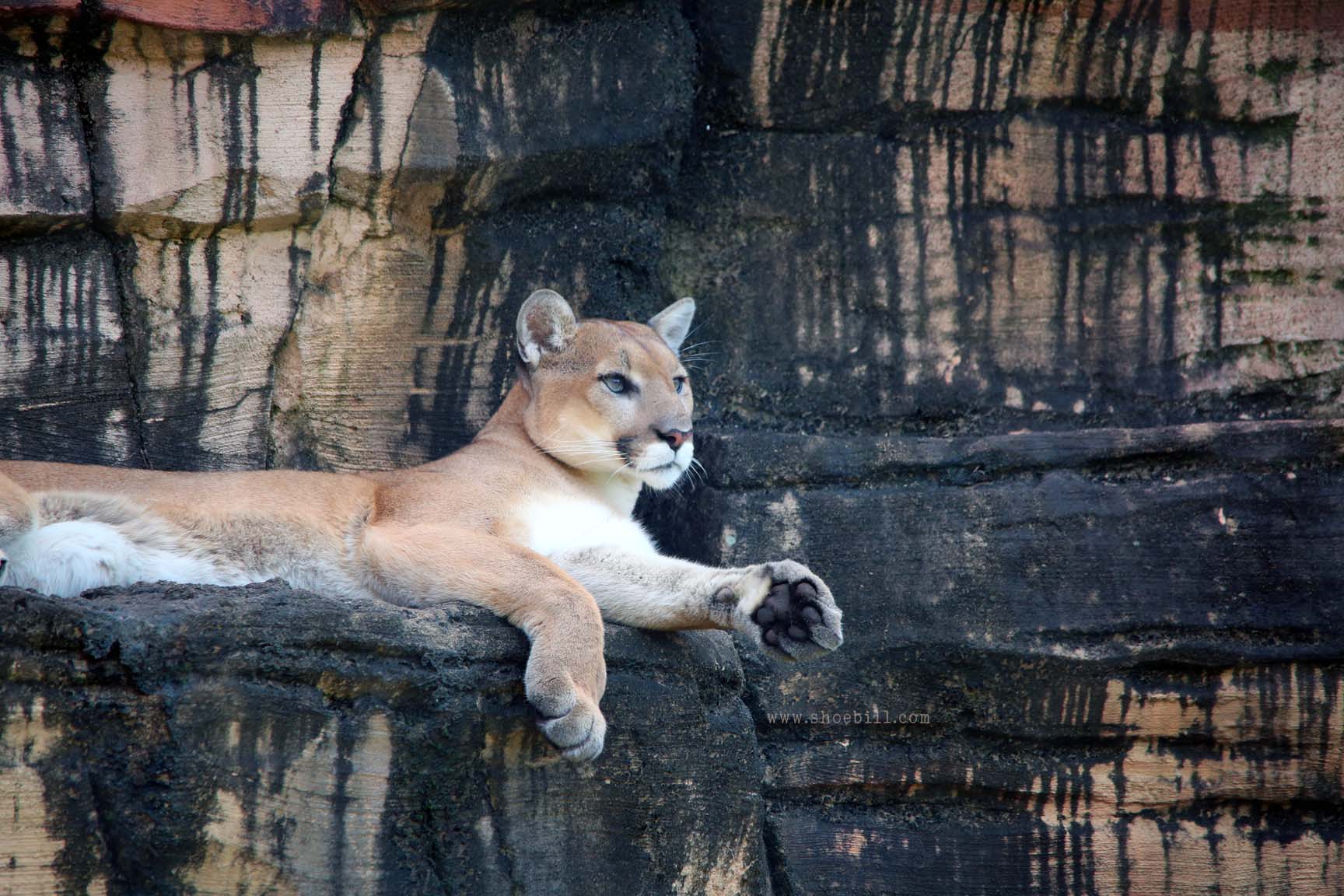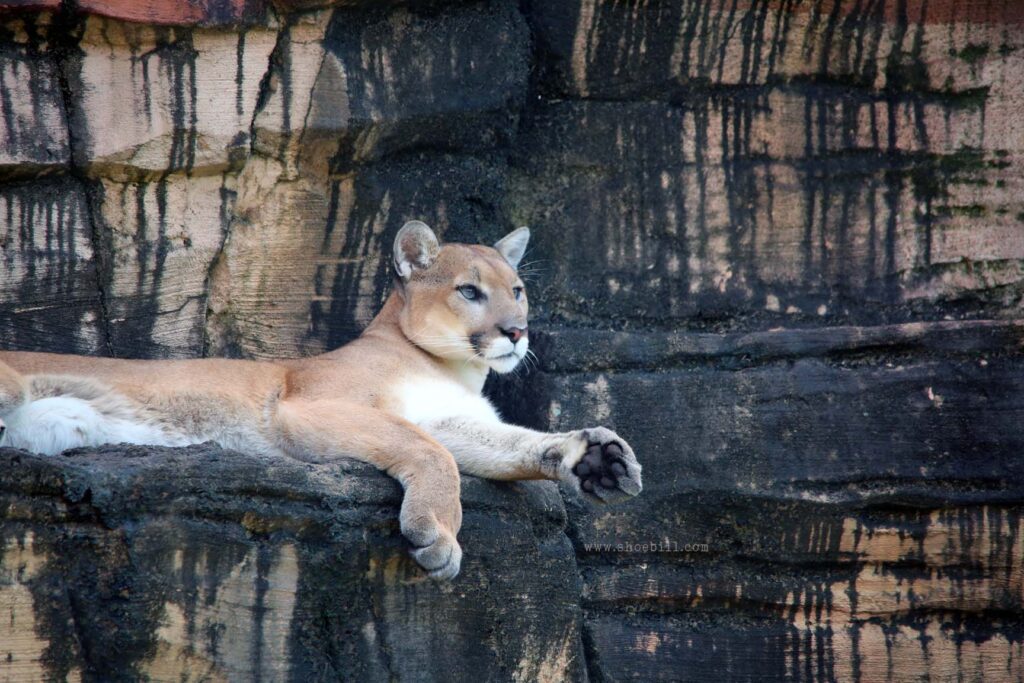Puma
The puma, also known as the cougar, mountain lion, or panther, is a large felid species native to the Americas. Here’s a description of the puma and its distribution:
Description of the Puma:
- Appearance: Pumas are muscular and agile cats with a tawny or reddish-brown coat, although coloration can vary depending on region and individual genetics. They have a long body, a small, rounded head, and a long tail that helps with balance while navigating their habitat. Pumas have powerful limbs and sharp retractable claws, which they use for hunting prey.
- Size: Pumas are the fourth-largest cat species in the world, after tigers, lions, and jaguars. Adult males typically weigh between 53 to 100 kilograms (115 to 220 pounds), while females are smaller, weighing between 29 to 64 kilograms (64 to 141 pounds). They have a body length ranging from 1.5 to 2.7 meters (5 to 9 feet), including their tail.
- Behavior: Pumas are solitary and elusive animals, primarily active during dawn, dusk, and nighttime hours. They are territorial animals, with males having larger home ranges that overlap with those of several females. Pumas are opportunistic hunters, preying on a variety of animals, including deer, elk, bighorn sheep, small mammals, and occasionally livestock. They are known for their powerful leaps and stealthy hunting techniques, often ambushing their prey from close range.
- Habitat: Pumas inhabit a wide range of habitats, including forests, grasslands, deserts, and mountains. They are adaptable animals, capable of living in diverse ecosystems from sea level to high elevations. Pumas require access to adequate cover and prey populations within their territory.
- Conservation Status: Pumas are classified as a species of least concern by the International Union for Conservation of Nature (IUCN). However, their populations face threats from habitat loss, fragmentation, human-wildlife conflict, and hunting. Conservation efforts are underway to protect puma habitat, reduce human-wildlife conflicts, and ensure the long-term survival of this iconic species.
Distribution: Pumas have a broad distribution throughout North and South America, from Canada in the north to Argentina and Chile in the south. They are found in a variety of habitats across this range, including:
- North America: Pumas are found in the western United States, including states such as California, Colorado, Montana, and Washington, as well as western Canada, including British Columbia and Alberta. They are also found in Central America and parts of Mexico.
- South America: Pumas are widely distributed throughout South America, including the Andes Mountains, the Amazon rainforest, the Pampas grasslands, and the Patagonian steppes. They are found in countries such as Brazil, Argentina, Chile, Peru, and Venezuela.
While pumas are not specifically associated with particular counties, they can be found in a variety of rural and wilderness areas within their range, where they play a crucial role as top predators in their ecosystems.



